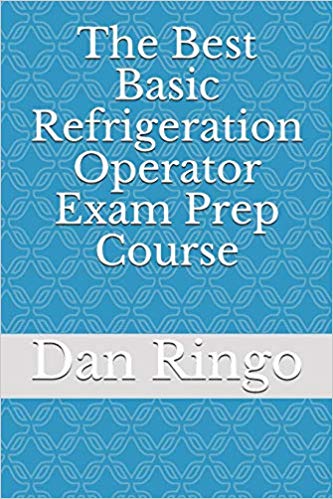
This book will deliver the complete basic understanding needed for an entry level refrigeration license examination. The information following is presented in a conversational manner with unorthodox examples and phrases to simplify the topics and content. It still includes mandatory terminology and codes related to the field of refrigeration.
As you study refrigeration keep in mind that every component’s function is listed or described in its name. For example an evaporator is called an evaporator because that is where the refrigerant evaporates or turns from a liquid to a vapor. A condenser is where the refrigerant condenses or changes from a vapor back into a liquid. The suction line is the line that compressor draws or sucks the refrigerant vapor from the evaporator and so on and so on.
When taking an exam or asked a question by an examiner about a component think first about the name and hence its function.
In your approach to the material and studying for your exam the student should prepare to discuss all of the following chapters by answering these questions about each item.
1. What is it?
2. Where is it located?
3. How does it work?
4. What is its purpose?
5. When is it used?
6. What are some common problems it can cause?
7. What are the remedies to some of the common problems it can cause?
8. What are the types?
Here is an example: Evaporator.
Q. What is an evaporator?
Ans. An evaporator is the cooling coil of the refrigeration system.
Genre: EDUCATION / VocationalConsistently in the top 200 in its chosen category. Sales also strong in audio formats
This book will deliver the complete basic understanding needed for an entry level refrigeration license examination. The information following is presented in a conversational manner with unorthodox examples and phrases to simplify the topics and content. It still includes mandatory terminology and codes related to the field of refrigeration.
As you study refrigeration keep in mind that every component’s function is listed or described in its name. For example an evaporator is called an evaporator because that is where the refrigerant evaporates or turns from a liquid to a vapor. A condenser is where the refrigerant condenses or changes from a vapor back into a liquid. The suction line is the line that compressor draws or sucks the refrigerant vapor from the evaporator and so on and so on.
When taking an exam or asked a question by an examiner about a component think first about the name and hence its function.
In your approach to the material and studying for your exam the student should prepare to discuss all of the following chapters by answering these questions about each item.
1. What is it?
2. Where is it located?
3. How does it work?
4. What is its purpose?
5. When is it used?
6. What are some common problems it can cause?
7. What are the remedies to some of the common problems it can cause?
8. What are the types?
Here is an example: Evaporator.
Q. What is an evaporator?
Ans. An evaporator is the cooling coil of the refrigeration system.
| Language | Status |
|---|---|
|
English
|
Already translated.
Translated by Flavia Trindad
|
|
Spanish
|
Unavailable for translation.
|